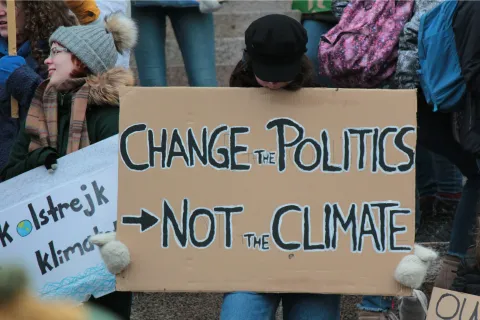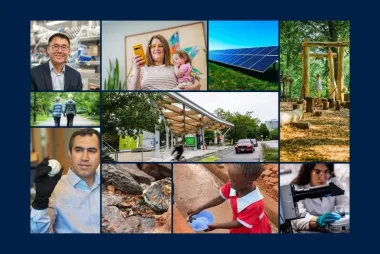What Trump’s climate policies mean for Canada—and what we can do next

With the U.S. set to roll back climate policies under a new Trump administration, Canada faces tough questions about its own climate commitments. Climate policy experts Drs. Simon Donner of the Institute for Resources, Environment and Sustainability and Department of Geography and Holly Caggiano in the School of Community and Regional Planning weigh in on what this shift means for global climate action and how individuals can stay engaged without feeling overwhelmed.
What does U.S. withdrawal from climate agreements mean for Canada?
Dr. Holly Caggiano (HC): It’s disheartening because the U.S. has contributed the most to global emissions and is the world’s top fossil fuel producer. But Canada has a chance to step up as a North American climate leader.
Dr. Simon Donner (SD): The UN climate process will continue without U.S. involvement. It survived the first Trump administration, and it will survive this one. The U.S. is ceding international climate leadership to Europe, China and others eager to dominate the low-carbon tech market.
I think the biggest concern is losing U.S. financial support for climate action in the developing world. Without it, other nations may follow suit.
How could U.S. policy rollbacks affect Canada?
HC: Many renewable energy developers work across both countries. Trump’s policies create regulatory and funding uncertainty, which hurts business.
SD: One risk is electric vehicles (EVs). If Trump repeals Biden’s fuel efficiency standards and EV incentives, automakers may slow their EV plans. Canada would then struggle to meet its targets. But uncertainty remains—automakers don’t want to abandon their existing EV investments.
What impact could Trump’s pro-fossil fuel stance have on Canada?
HC: Phasing out fossil fuels is essential. Renewables only cut emissions if they replace fossil-fuel power. Canadians and Americans broadly support renewable energy incentives and cutting fossil fuel subsidies. Trump’s pro-industry stance doesn’t translate into broad public support—his approval ratings remain low compared to past U.S. presidents.
SD: Trump’s pro-oil stance is welcomed by some in Canada’s energy sector. Already, we’re seeing tariffs used to push for more pipelines and liquefied natural gas (LNG) exports, likely a key issue in Canada’s next federal election.
Still, expanding U.S. oil drilling could backfire by lowering global prices, which would hurt Canada’s industry.
How can households prepare for energy shifts?
HC: It can be difficult to estimate what uses the most energy in your home – I recommend checking out BC programs like the Energy Conservation Assistance Program, which provides in-home visits to income qualified households.
SD: Most climate-friendly choices also save money, such as energy-efficient appliances, lowering the thermostat, and using transit. Even bigger investments, like EVs or heat pumps, pay off long-term. Ultimately, these technologies win out because they are cheaper and more efficient.
How can people manage eco-anxiety?
HC: Engage in community action. Check out resources like the Climate Mental Health Network’s Taking Action and Self Care worksheets. It’s natural to worry, but imagining a better future is part of the solution. Storytelling can also be a powerful outlet to channel anxiety into imagination. You can learn more about climate and storytelling at Climate Spring.
SD: Talk about it. People often underestimate how much others care about climate change. And remember, this is a collective challenge—no one can fix it alone. Start with small actions and conversations with friends and family.
Professors Caggiano and Donner recently spoke at a climate action panel in the lead-up to Climate Emergency Week at UBC.



